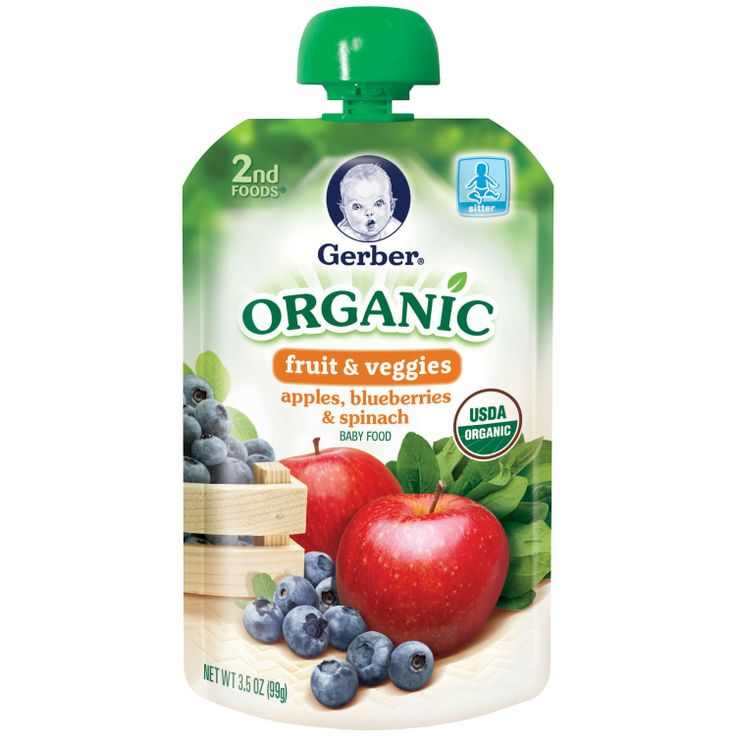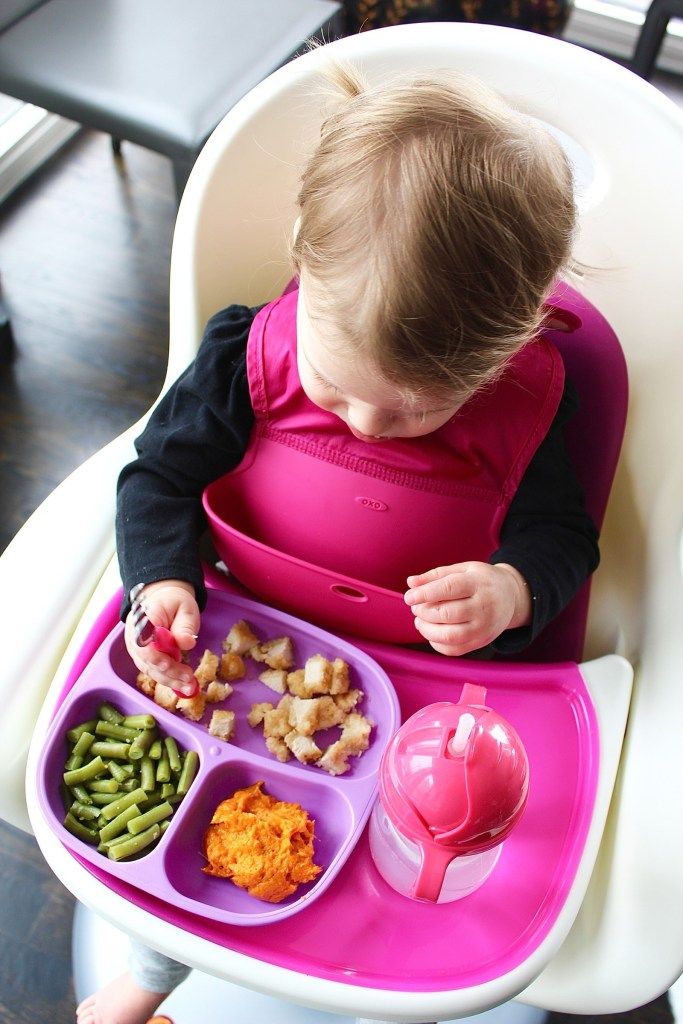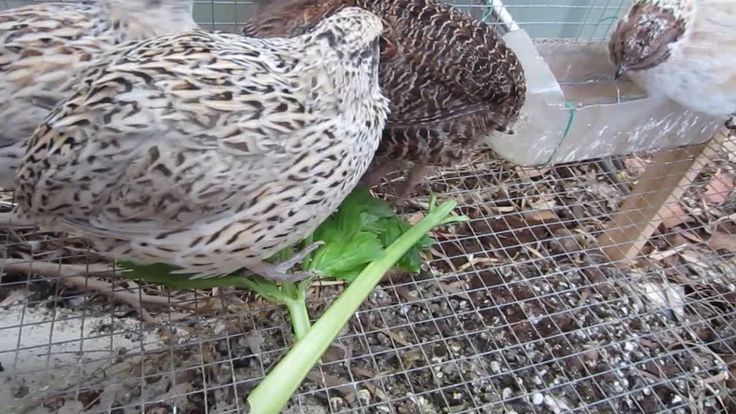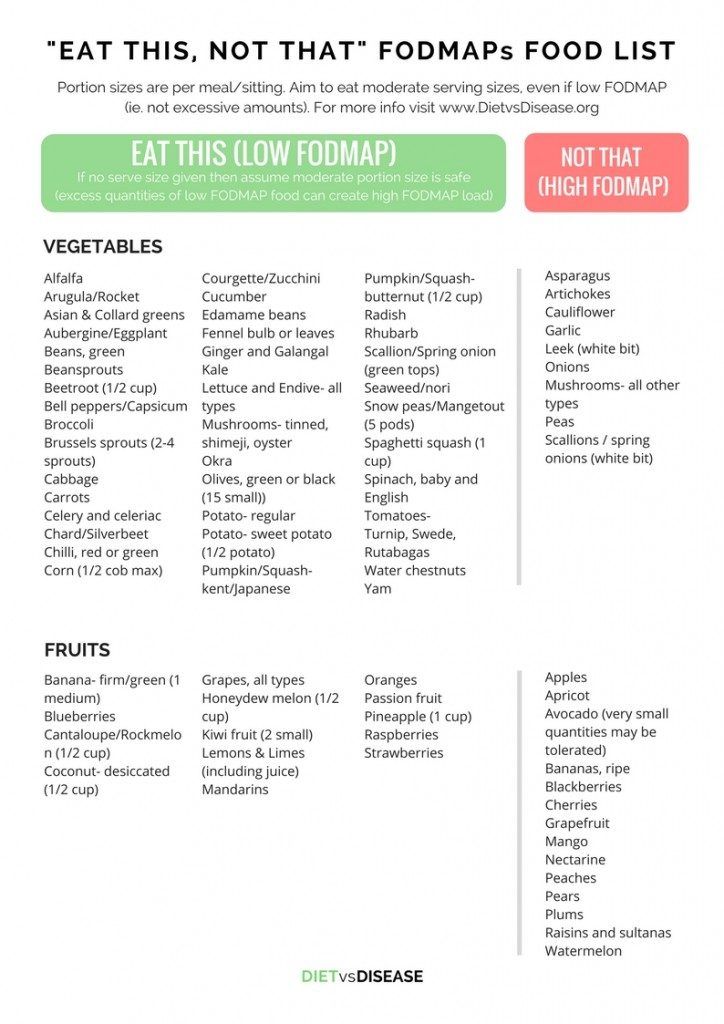Fig baby food
Safety, Right Age, Benefits And Recipes
Figs provide several nutrients and antioxidants but follow safety tips to avoid side effects.
Research-backed
MomJunction believes in providing reliable, research-backed information to you. As per our strong editorial policy requirements, we base our health articles on references (citations) taken from authority sites, international journals, and research studies. However, if you find any incongruencies, feel free to write to us.
Image: iStock
Parents often ask their doctors when they can start figs for babies due to the several health benefits of figs. Fig is a delectable, nutritious fruit from the common fig tree (Ficus carica). It is from the mulberry family and has dark green to purplish skin. Ripe figs have magenta pulp that is filled with tiny edible seeds. They taste sweet and carry a hint of berry flavor.
Figs are available in fresh, dried, or canned forms. The nutritional value of a fig depends on the variety of the fig. Read this post to know about the nutritional value and health benefits of figs, the right age and way to feed figs to babies, and baby-friendly fig recipes.
When Can Babies Eat Figs?
Most babies can eat fresh, fully-ripe figs as puree or mash from six months of age. Once they adjust to fig’s taste and digestibility, you can add them to other foods, such as porridge. Once your baby is nine to ten months old, feed small, bite-sized pieces of figs as finger foods.
Babies between six and 12 months of age should not eat dried figs as they are a potential choking hazard (1). If you wish to feed dried fig to babies younger than 12 months, serve it in cooked, mashed, or puree form.
Related: 21 Healthy Finger Foods For Toddlers
Nutritional Value Of Fig
Figs offer several vital nutrients, such as dietary fiber, potassium, calcium, magnesium, iron, phosphorus, antioxidants, and vitamins A, B, E, K and C (2). One small, fresh fig (40g) added to your baby’s regular diet can offer the following nutrients (3) (4) (5).
| Nutrients | Amount | AI (7-12 months) |
| Water | 31.6g | – |
| Energy | 29.6Kcal | – |
| Fiber, total dietary | 1.16g | – |
| Calcium, Ca | 14mg | 260mg |
| Iron, Fe | 0.148mg | 11mg (RDA) |
| Magnesium, Mg | 6.8mg | 75mg |
| Phosphorus, P | 5.6mg | 275mg |
| Potassium, K | 92.8mg | 860mg |
| Vitamin A, RAE | 2.8µg | 500µg |
AI = Adequate intake – nutrient level assumed to ensure nutritional adequacy.
Sources: U.S. Department of Agriculture and Oregon State University
Related: Iron Deficiency Anemia In Babies: 5 Causes And 9 Symptoms
Possible Health Benefits Of Figs
The inclusion of figs in a baby’s diet could provide the little one the following benefits (6).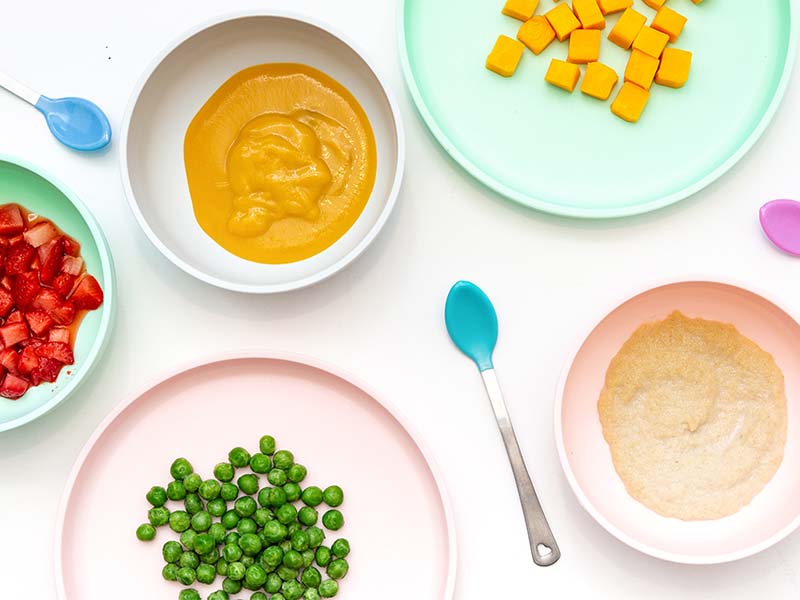
- Gives energy and hydration: One small, fresh fig (40g) provides 30kcal of energy and a considerable amount of water. These are necessary for young babies who have increased energy needs to sustain rapid growth and development.
- Offers vital micronutrients: Figs are an excellent source of potassium, iron, copper, magnesium, calcium, vitamin A, B and dietary fiber. These nutrients are necessary for different physiological functions that ultimately support a baby’s growth and development. Figs are antimicrobial in nature and strengthen the immune system..
- Provides antioxidants: Flavonoids, anthocyanins, and phenolic compounds, such as gallic acid, chlorogenic acid, and epicatechin, provide fig its antioxidant properties (6) (7). Antioxidants boost immunity and improve long-term health.
- Boosts digestive health: Figs contain significant amounts of dietary fiber, primarily cellulose, that adds bulk and retains intestinal water.
 Both these features are necessary to maintain healthy bowel movements and keep constipation away. Some research studies even support the fig’s potential laxative effects (8).
Both these features are necessary to maintain healthy bowel movements and keep constipation away. Some research studies even support the fig’s potential laxative effects (8).
Did you know?
A cup of dried figs can provide about 300mg of calcium, which can contribute to little one’s daily calcium requirements (13).
Related: Baby Development Month By Month
How To Select And Store Figs?
Below are some tips that can help you carefully select and store figs for safe feeding.
Tips for selecting figs
- Pick ripe figs with clean, dry, and unbroken skin.
- Avoid figs with bruised, blemished or broken skin and those that turn mushy on pressing. A fresh fig is soft to touch yet stays intact when pressed.
- Smell a fig, and if it yields a sour smell, the fig is likely stale.
- Purchase dried figs sold in the sealed packages from a reputable brand.
- Buy canned figs in properly sealed containers.
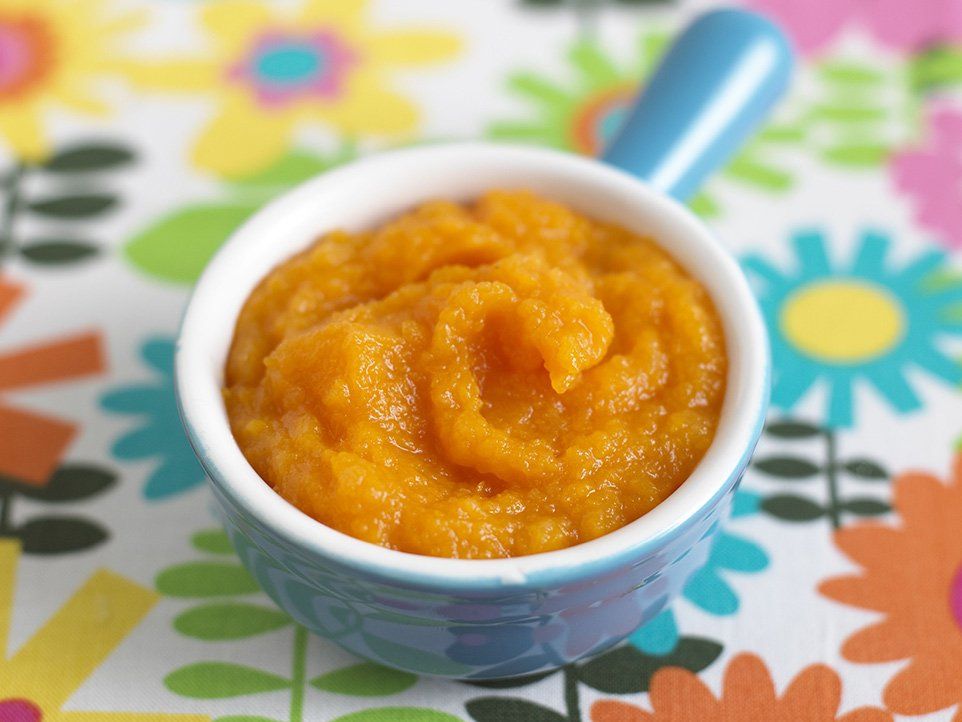 A dented or broken container indicates potential bacterial contamination.
A dented or broken container indicates potential bacterial contamination.
Tips for storing figs
- Before storing, clean the fresh figs with a moist cloth. Transfer them to a plastic bag and store them in the refrigerator. Consume the figs within two to three days.
- Fresh figs can be frozen whole. Alternatively, you can store fig slices in a freezer bag or container. Both can be frozen and stored for up to 12 months.
- Store dried figs in their original package or in an airtight container , away from heat and moisture, at room temperature for a month. You can store them up to six months to a year in the refrigerator.
- Once the package is opened, store dried figs in an airtight container in the refrigerator away from heat and moisture. You can store them for six months to a year.
Precautions To Take While Feeding Figs To Babies
Observing some simple precautions ensures your baby consumes figs safely.
- Buy organic figs from a reputable seller to ensure the quality of the fruit. Store them carefully as figs are delicate and bruise easily.
- Begin feeding fresh figs in mash or puree form to your baby. Once the baby likes the taste and texture and can digest the figs comfortably, begin adding the fruit to other foods.
- Follow the “three-day wait” rule and during this time; feed only figs and no other new food to your baby. It helps rule out sensitivity, intolerance, or allergy.
- Introduce one to two teaspoons of pureed or mashed fig to your baby. Once the baby is comfortable with the fruit’s taste and digestibility, gradually increase the amount to a tablespoon or two.
- If the baby looks uncomfortable after ingesting figs, stop feeding immediately, and try again later. If the problem persists, consult a pediatrician.
- Fig allergy (oral allergy syndrome) is possible, and its symptoms come up immediately after ingesting or touching fresh or dry figs.
 Pay attention to allergy signs, such as itchy skin rash (hives), sneezing, wheezing, or sore throat (9).
Pay attention to allergy signs, such as itchy skin rash (hives), sneezing, wheezing, or sore throat (9).
- Babies allergic to fig may show cross-reactivity to weeping fig latex, natural rubber latex (latex-fruit syndrome), birch pollen, avocado, kiwi fruit, mulberry, and papaya (10) (11) (12). If your baby has a family history of allergies, consult a doctor before feeding figs in any form.
- Both fresh and dry figs might interact with certain drugs. If your baby is on medications, consult your doctor before adding fig to your baby’s diet.
- Don’t go overboard with figs. Feeding too many figs, especially dried figs, may cause gastrointestinal discomfort, such as diarrhea, in some babies.
Related: 20 Amazingly Healthy And Tasty Fruit Purees Recipes For Babies
Healthy Fig Recipes For Babies
Now, as you know about figs, let’s see some baby-friendly fig recipes that you can prepare for your baby.
1.
 Fig puree
Fig puree Image: iStock
You will need:
- 1 fresh fig (peeled and chopped)
- 1tbsp breast milk or formula (optional)
How to prepare:
- Put the figs and water in a saucepan over medium heat. Cook the figs until the water comes to a boil.
- Then, lower the heat and cook the figs for 20 to 25 minutes.
- Turn off the heat and set the figs aside to cool.
- Once they are cool, blend the figs into a lump-free smooth paste.
- Add breast milk or formula to adjust the consistency and make the puree easy to swallow. You can add the puree to the porridge also.
Quick tip
You can alternatively soak dried figs in water overnight (or in warm water for 30 minutes) and blend them into a smooth paste to make figs puree.
2. Apricot and fig puree
Image: iStock
You will need:
- 2 apricots (mashed)
- 2 figs (mashed)
- ¼ cup breast milk or formula
How to prepare:
- Put all the ingredients in a blender and blend well.
 Ensure the mixture is lump-free and has a smooth consistency.
Ensure the mixture is lump-free and has a smooth consistency. - Pour the mix into a feeding bowl and feed the baby.
3. Roasted fig mash
Image: Shutterstock
You will need:
- 2 figs
- 1tsp olive oil
How to prepare:
- Preheat the oven to 400°F (204°C).
- Apply olive oil on the fig and place them on a baking tray.
- Bake them for about 18 to 20 minutes until their skin becomes puckered and soft.
- Once done, take the figs out of the oven and let them cool.
- Mash the figs thoroughly using a fork and feed. You can add breast milk or formula if you feel the texture is too thick for the baby.
Related: 6 Key Benefits Of Using Olive Oil For Babies
4. Fig yogurt smoothie
Image: Shutterstock
You will need:
- 2 figs (mashed)
- 1 cup unsweetened, plain Greek yogurt
- ½ tsp nuts powder (almond, walnut, and pistachio)
How to prepare:
- Put all the ingredients in a blender and blend into a smooth, lump-free liquid.
 Add some water to adjust the consistency, if needed.
Add some water to adjust the consistency, if needed. - Pour the smoothie into a feeding bowl and feed your baby.
- You can add oats to this smoothie and feed it to your baby.
Quick tip
Add a drop of vanilla essence or bean paste to accentuate the smoothie’s taste.
Figs are nutritious fruits with many essential vitamins and minerals that aid in the proper growth and development of the baby. You may start feeding figs to your baby after the age of six months. Initially, introduce figs to them through a pureed form. Start to feed bites of figs as they near their first year of birth. Continue feeding them the fruit only if they are not allergic to it. Consult your pediatrician before feeding figs if your baby is on medications or is genetically allergic to the fruit.
Key Pointers
- From six months of age, babies can be given fresh or completely ripe figs in mashed or semi-solid form.
- They are a rich source of vitamins, dietary fiber, and antioxidants vital for a baby’s growth.
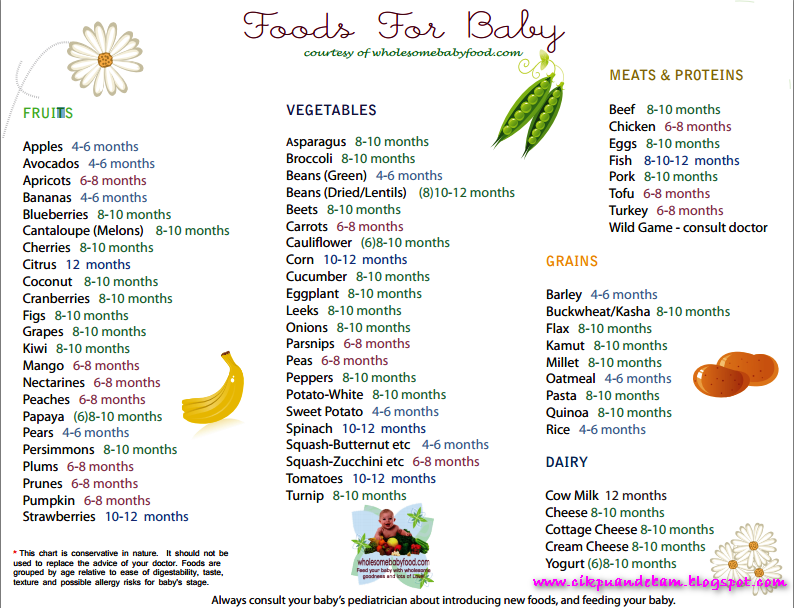
- Fig puree, roasted fig mash, and several other fig recipes as you scroll through.
References:
MomJunction's articles are written after analyzing the research works of expert authors and institutions. Our references consist of resources established by authorities in their respective fields. You can learn more about the authenticity of the information we present in our editorial policy.
1. Choking Hazards; CDC
2. Joe Vinson et al.; The functional food properties of figs; Researchgate
3. Figs, raw, FDC ID: 173021; Fooddata Central; USDA
4. Infant Nutrition and Feeding; USDA
5. Potassium; Oregon State University
6. Shukranul Mawa et al.; Ficus carica L. (Moraceae): Phytochemistry, Traditional Uses, and Biological Activities; NCBI
7. Olga S Arvaniti et al.; Review on fresh and dried figs: Chemical analysis and occurrence of phytochemical compounds, antioxidant capacity, and health effects; NCBI
8. Hong-Geun Oh et al.; Effects of Ficus carica paste on constipation induced by a high-protein feed and movement restriction in beagles; Researchgate
Hong-Geun Oh et al.; Effects of Ficus carica paste on constipation induced by a high-protein feed and movement restriction in beagles; Researchgate
9. Allergy information for: Fig (Ficus carica (Common fig)); The University Of Manchester
10. N.V. Cruz et al.; Fig Allergy: Not Just Oral Allergy Syndrome (OAS); The Journal Of Allergy And Clinical Immunology
11. M Focke et al.; Cross-reactivity between Ficus benjamina latex and fig fruit in patients with clinical fig allergy; NCBI
12. S. Urbani et al.; Adverse reaction to Ficus Carica: reported case of a possible cross-reactivity with Der p1; BMC
13. Calcium content of foods; University of California, San Francisco
The following two tabs change content below.
- Reviewer
- Author
Swati Patwal is a clinical nutritionist, a Certified Diabetes Educator (CDE) and a toddler mom with over eight years of experience in diverse fields of nutrition.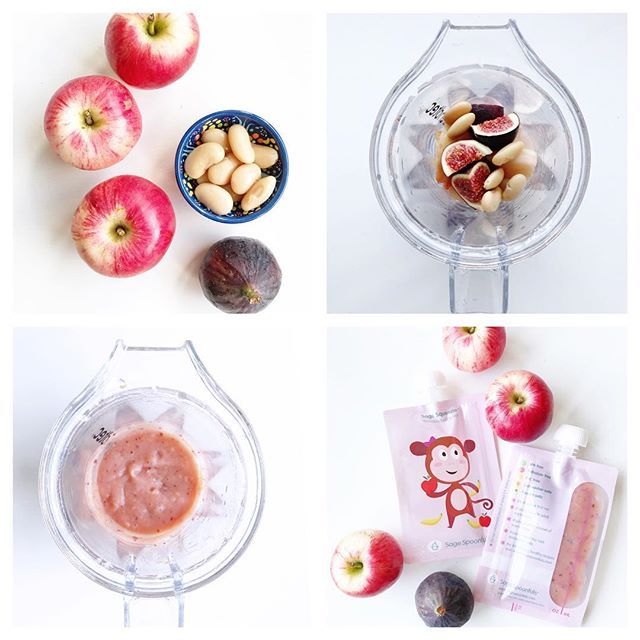 She started her career as a CSR project coordinator for a healthy eating and active lifestyle project catering to school children. Then she worked as a nutrition faculty and clinical nutrition coach in different...
She started her career as a CSR project coordinator for a healthy eating and active lifestyle project catering to school children. Then she worked as a nutrition faculty and clinical nutrition coach in different...
View Profile ›
Seeemaa Budhraja is a Delhi-based dietitian and nutritionist. She specializes in weight and lifestyle management. She is a healthy recipe designer, works as a health motivator and wellness coach as well. She has worked as a slimming head with one of the top organizations in India. She excels in therapeutic diets for various lifestyle-related diseases. This renowned nutritionist is a...
View Profile ›
How Much Sugar In Pregnancy Is Too Much And Its Effects
How Much Sugar In Pregnancy Is Too Much And Its Effects
26 Foods To Avoid During Pregnancy
26 Foods To Avoid During Pregnancy
Chia Seeds During Pregnancy: Safety, Health Benefits And Side Effects
Chia Seeds During Pregnancy: Safety, Health Benefits And Side Effects
12 Possible Benefits Of Drinking Coconut Water In Pregnancy
12 Possible Benefits Of Drinking Coconut Water In Pregnancy
Papaya For Babies: Safety, Benefits, Side Effects and Recipes
Papaya For Babies: Safety, Benefits, Side Effects and Recipes
Is It Safe To Eat Sausage During Pregnancy?
Is It Safe To Eat Sausage During Pregnancy?
4 Common Causes Of Food Aversions During Pregnancy
4 Common Causes Of Food Aversions During Pregnancy
Lemon For Babies: When To Introduce, Benefits And Side Effects
Lemon For Babies: When To Introduce, Benefits And Side Effects
10 Health Benefits Of Eating Apples During Pregnancy
10 Health Benefits Of Eating Apples During Pregnancy
3 Fig/Anjeer Recipes for Babies [Fig water| Fresh Fig Puree |Dried Fig Puree]
| | by Dr Hemapriya
Here is a collection of simple recipes made with one fruit, which is traditionally used to treat constipation. Yes! it’s fig. Constipation is most common in babies and most of the babies face it when they are introduced to solids. These simple recipes, 3 Fig/Anjeer Recipes for Babies [Fig water| Fresh Fig Puree |Dried Fig Puree] are the easy and yummy way to add this amazing fruit in your little one’s diet.
Yes! it’s fig. Constipation is most common in babies and most of the babies face it when they are introduced to solids. These simple recipes, 3 Fig/Anjeer Recipes for Babies [Fig water| Fresh Fig Puree |Dried Fig Puree] are the easy and yummy way to add this amazing fruit in your little one’s diet.
3 Fig/Anjeer recipes for Babies [Fig water| Fresh Fig Puree |Dried fig Puree]
Fig water
Ingredients:
Method:
Fresh fig puree:
Ingredients:
Method:
Dried Fig Puree:
Ingredients:
Method:
3 Fig/Anjeer Recipes for Babies [Fig Water| Fresh Fig Puree |Dried fig Puree]
Ingredients
Instructions
Buy Healthy Nutritious Baby, Toddler food made by our own Doctor Mom !
Figs are loaded with nutrients which support the baby’s overall growth and development. They are rich in antioxidants, calcium, iron, potassium, fiber, vitamin B5, B6 and much more. They are good to be introduced after 6 months completion. Figs has several health benefits. They are less allergic and helps to maintain the gut health. It also helps to prevent anemia, treats constipation, strengthens bone and also helps to build the immune system.
They are good to be introduced after 6 months completion. Figs has several health benefits. They are less allergic and helps to maintain the gut health. It also helps to prevent anemia, treats constipation, strengthens bone and also helps to build the immune system.
Fig water
- Age Recommendation: 6 Months +
Ingredients:
- Dried Fig
Method:
1. Soak fig in water overnight.
2. Drain the water.
3. Fig water eases constipation in babies.
Fresh fig puree:
- Age Recommendation: 6 Months +
Ingredients:
- Fresh fig fruit
Method:
1. Cut the fig into halves.
2. Scoop the flesh using spoon.
3. Mash well.
NOTE: Add water, BM/FM to adjust the consistency.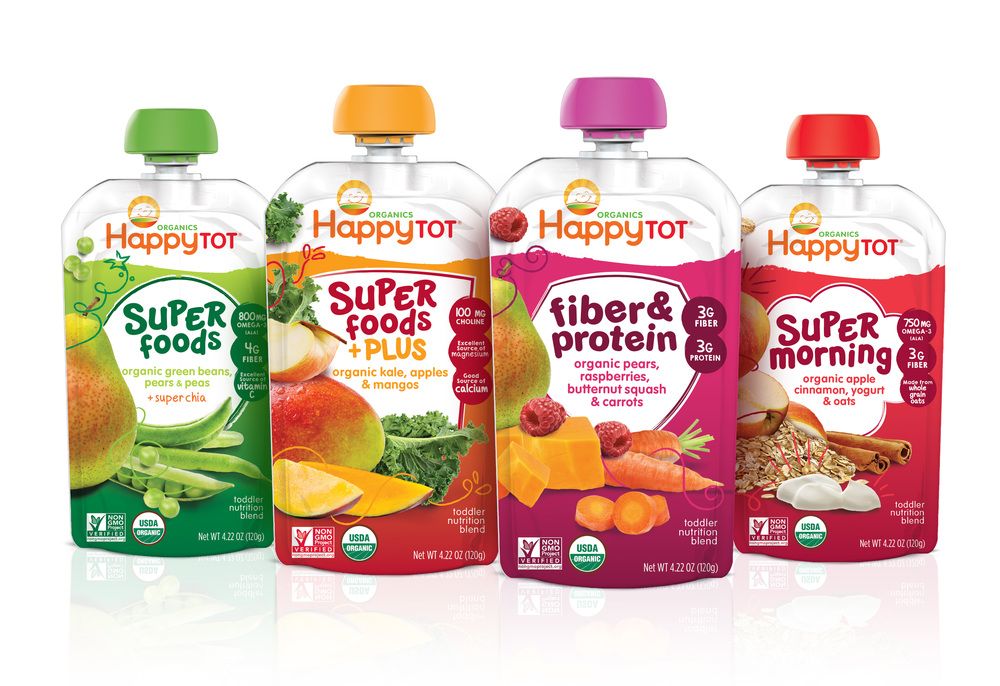
Dried Fig Puree:
- Age Recommendation: 7 Months+
Ingredients:
- Dried Fig
Method:
1. Soak fig in water for 3-4 hours.
2. Add the soaked figs to mixer jar.
3. Grind to smooth puree.
4. Serve.
Figs are available in dried and fresh forms. Hence, we have used both the forms in recipes. You can opt for the recipes with the available form of figs 😊. These purees can also be added as a natural sweetener in other recipes. The sweet taste with the soft, chewy and a little crunchy texture would make the baby love and gobble up the entire treat.
- Dried Fig
- Fresh fig fruit
- Dried Fig
Fig water
Age Recommendation: 6 Months +
Ingredients:
Dried Fig
Method:
Soak fig in water overnight.
Drain the water.

Fig water eases constipation in babies.
Fresh fig puree:
Age Recommendation: 6 Months +
Ingredients:
Fresh fig fruit
Method:
Cut the fig into halves.
Scoop the flesh using spoon.
Mash well.
NOTE: Add water, BM/FM to adjust the consistency.
Dried Fig Puree:
Age Recommendation: 7 Months+
Ingredients:
Dried Fig
Method:
Soak fig in water for 3-4 hours.
Add the soaked figs to mixer jar.
Grind to smooth puree.
Serve.
Buy Healthy Nutritious Baby, Toddler food made by our own Doctor Mom !
Shop now!whether it is possible to give normal or dried?
Child's birthday » Baby food » When and in what quantities can figs be given to children?
06/24/2016
Content
- 1 Composition of figs
- 2 The benefits of figs for the child
- 3 The damage to the building for the child
- 4 When and in what quantities of the child you can feed with fruit
- 5 figs and milk - the best remedy against cough
- 6 Recipes for sweets based on figs
- 6.
 1 Hercules pie
1 Hercules pie - 6.2 Fig roll
- 6.
- 7 Results
- 8 Video: Fig tart - Grandmother Emma's recipe
The composition of the fig tree is
Fresh fruit contains up to 25% sugars, 1.3% proteins, 0.4% organic acids, 3.25% glucose, 2.45% levulose and almost 4% sucrose, as well as pantothenic, glyceric and polyic acids.
Rich mineral composition helps to recover faster and easier to endure poisoning. Dried figs treat sore throats and coughs, improve the functioning of the heart and digestive organs.
Thus, regular consumption of fig helps to saturate the body with vitamins and microelements.
Benefits of figs for children
Mothers don't know if figs can be given to children.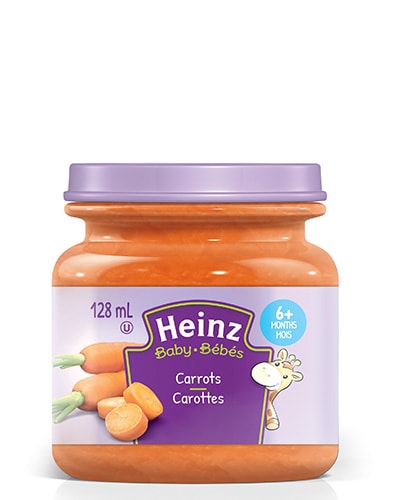 Nutritionists and doctors say that a young organism tolerates dried and fresh fruit equally well, provided that the baby does not have an individual intolerance to the components of an exotic fruit.
Nutritionists and doctors say that a young organism tolerates dried and fresh fruit equally well, provided that the baby does not have an individual intolerance to the components of an exotic fruit.
How is the fruit useful for a child?
- Replaces vitamin complexes. Dried fruit contains a record amount of vitamins and minerals;
- Delicious drug replacement. Figs have long been used in folk medicine to treat babies for colds;
- Universal tonic. Dried figs are used to make a tonic that improves digestion in children;
- Tasty and healthy substitute for sweets;
- Laxative for children from 1 year of age. Fresh fruit porridge has a strong laxative effect and helps the baby cope with intestinal dysfunction;
- Improves immunity;
- Reduces cholesterol levels due to the presence of omega-3 and omega-6 fatty acids;
- Strengthens the nervous system and increases the elasticity of blood vessels;
- Normalizes the functioning of the kidneys and liver;
Harm of figs for a child
Before introducing figs into a child's diet, you need to consult a doctorFresh and dried figs are not dangerous for the human body. However, its fruits are not recommended for use in gout and gastrointestinal diseases. Can dried fruit be given to overweight children? Nutritionists advise not to do this, because the young body metabolizes sugar 2 times faster, which leads to rapid weight gain.
When and how much fruit can be fed to a child? By this time, the baby's body is so strong that it can digest dried fruit. Acquaintance of the baby with this fruit must be carefully monitored. It is advisable to stop feeding immediately if the baby develops indigestion, vomiting or dizziness.
How much dried fruit can be given to children? At the age of 1-1.5 years, 1 dried fruit per day is enough for a child. Despite its harmlessness and usefulness, the fruit in large quantities can cause indigestion or diarrhea. It is recommended to increase the daily dose gradually. Feeding is recommended to start with half. The dose can be increased by 50% after 1 week of eating the fruit.
It is recommended to increase the daily dose gradually. Feeding is recommended to start with half. The dose can be increased by 50% after 1 week of eating the fruit.
A child up to 4-5 years old is given figs in the amount of no more than 3 fruits per day. Every 3 days it is recommended to pause for one day.
The systematic use of fruit leads to addiction and a weakening of its therapeutic and restorative effect.
Figs and milk are the best cough medicine
You can make a drink to fight a cold. For cooking, you will need 50 g of dried fruit, a glass of milk, a tablespoon of honey and 30 g of butter. The ingredients are mixed and added to warm milk. The medicine is given to the baby in small amounts at bedtime - 50 ml for children aged 1 to 2 years and 100 ml - from 2.5 years.
Ingredients for cooking figs with milkFresh fruit is also suitable for fighting colds. To prepare a medicinal drink you will need:
- 200 ml of milk;
- 1 large fruit.

Cooking will not take long. Put the milk to boil and take care of the southern plant - peel it, rinse it well and pass it through a meat grinder. Put the purified product into boiling milk and turn off the fire. Let the milk cool down. The remedy is drunk 3-4 times a day half an hour after eating. Children should not be given more than 200 ml of syrup at a time.
The quality of the prepared medicine depends on the fat content of milk. Fatty milk softens the throat better and removes phlegm from the lungs faster.
Recipes for sweets based on figs
What to do when a child needs to eat figs, but he refuses? In this case, delicious dishes are prepared based on this fruit:
Hercules pie
Hercules pie with apples and figsTo prepare you will need:
- 100 g of dried fruit;
- 500 g regular apples;
- 3 tbsp. l. Sahara;
- 150 g each of butter and honey;
- 250 g of Hercules porridge;
- 1 g cinnamon;
- 2 tbsp.
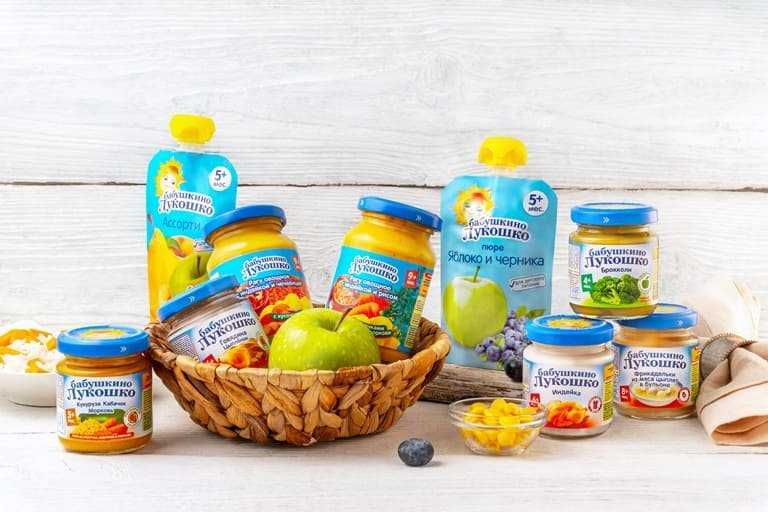 l. walnuts.
l. walnuts.
The cooking sequence is as follows:
- Apples are peeled, seeds are peeled and cut into small cubes. Sliced apples are placed in a heated saucepan and covered with 1 tbsp. l. Sahara. Cook 10 minutes;
- After 10 minutes, chopped dried figs are added. Boil 10 minutes;
- Butter, sugar, honey and Hercules are melted in a separate bowl;
- The composition of the two containers must be mixed well and poured into baking molds;
- The cake is baked for 25 minutes at 190 degrees. The finished dish is sprinkled with walnuts.
Hercules pie is a very nutritious and tasty pastry rich in vitamins and minerals. Hercules pie can be given to children from 2 years.
Fig roll
Roll with nuts and figsIngredients:
- 120 g dried figs;
- 100 g crackers and walnuts each;
- 80 g honey;
- 20 g candied oranges;
- 5 chocolate bars;
- Vanilla sugar.
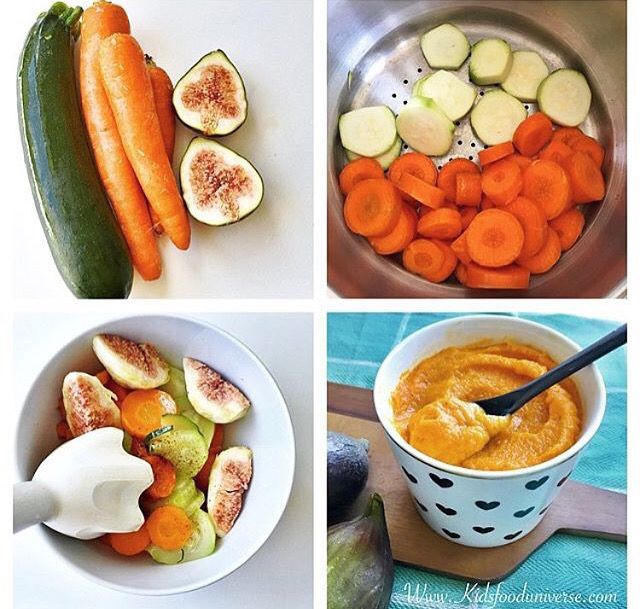
Nuts, candied fruits, crackers, figs are passed through a meat grinder and mixed with egg yolk and honey. Rusks are used as a thickener. The formed mass is sent to the refrigerator for a day.
Fig roll is a simple dish that does not lose its beneficial properties during heat treatment. The roll is perfect for feeding children from the age of 1.5 years.
Results
The fig is considered one of the healing fruits The fig contains many vitamins and minerals. Fig is quickly absorbed and does not burden the digestive organs, so it can be given to children as early as 9 months of age. Medicines are also made from it not only to fight colds, but also to treat gastrointestinal dysfunction and kidney problems.
Video: Fig Tart - Grandma Emma's Recipe
Didn't find your organization?
Add now!
2016-06-24
Previous Useful properties of pomegranate for children
Next Age restrictions on the use of kiwi for children
See also
About the benefits of chamomile tea for children
Contents1 What is it?2 Useful properties3 Instructions for use3. 1 How to brew?4 Age restrictions and ...
1 How to brew?4 Age restrictions and ...
Is it possible for a child to have figs - benefits and harms, when to start giving - Timosha
- Vegetables and fruits in complementary foods
Everyone is used to eating dried figs, not fresh. This is a very useful fruit that contains many vitamins, has antimicrobial and laxative effects, strengthens the digestive and immune systems.
Figs in the child's menu are recommended to be introduced fresh and dry. This fruit is quite high-calorie and carries a large amount of amino acids, vitamins, fatty acids and minerals.
Why are figs useful?
Here are some useful properties of figs for children :
- For the physical and mental maintenance of the child's health - the presence of phosphorus, potassium, iron, magnesium, zinc in figs;
- Children with a weak gastrointestinal tract (GIT) benefit from fruit as a soft, not heavy food;
- The fiber found in the fruit aids in intestinal motility; prevents constipation;
- Babies prone to microbial infections are good to give figs like antibacterial agent ;
- As a prevention of hepatitis and jaundice, it is useful to give fruit, it has hepaprotective properties;
- The product strengthens children's immunity, forms protection against harmful pathogens;
- The iron found in the pulp of figs serves to prevent anemia in children .

Attention : Dried figs can have a negative effect on your baby's teeth due to the sugar they contain, but fresh figs help get rid of bacteria in the mouth.
How to give a child figs?
In the best case, a child should be given fresh figs , but natural conditions and climate allow him to grow only in warm sunny countries.
Therefore, it is possible to introduce dry figs into the baby's diet . The downside is the hard texture of the fruit, hard to chew. You can solve the situation by steaming the fruit or boiling for a minute.
At what age can a child have figs?
Dried figs in the form of puree or compote can be administered to crumbs from 9-12 months. You should start with half a teaspoon and monitor the reaction.
Dried fruits and raw fruits can be given to babies after 1.5 years of age. If there is no negative reaction, then 1-2 figs are introduced into the diet every few days.
But at what age can you give figs to a child without fear , so this is from five years and older. At this age, a child can eat 3-4 fruits daily, but nutritionists still recommend limiting the use of treats to 2-3 times a week.
The child's body is very sensitive to the introduction of any new products. Therefore, sometimes figs can be harmful to a child:
- The baby develops allergic reactions after introducing the fruit into the diet;
- The child suffers from frequent disorders;
- Various diseases of the gastrointestinal tract;
- Tendency to be overweight.
How to choose figs?
When choosing fresh figs, consider the appearance of the fruit.
It must be whole, without bruises and cuts, not too soft, otherwise it simply will not live up to its use. Fresh figs come in three colors - green, dark purple and purple. Dark fruits are always sweeter and more aromatic, but the risk of allergic reactions in green fruits is less.